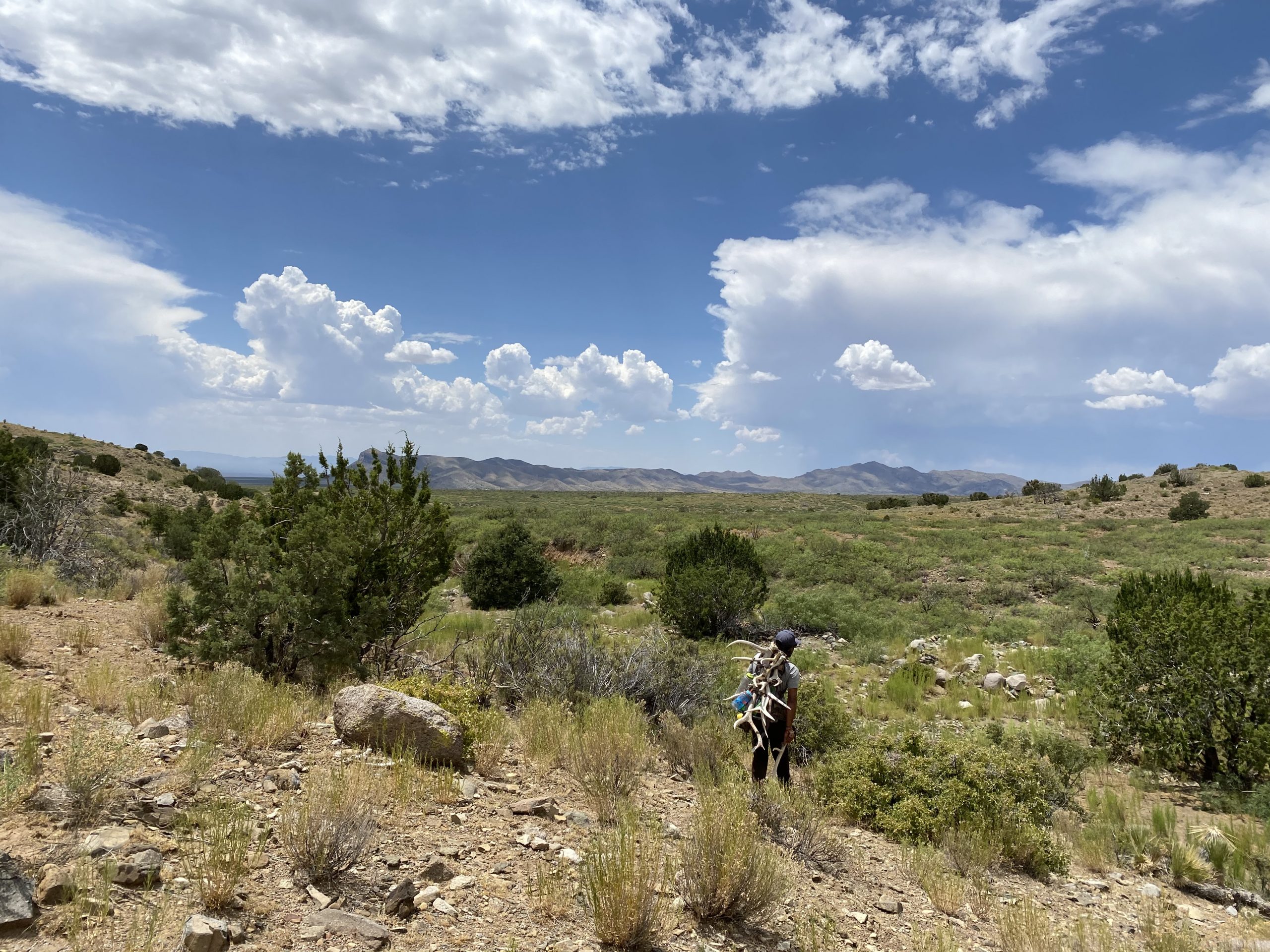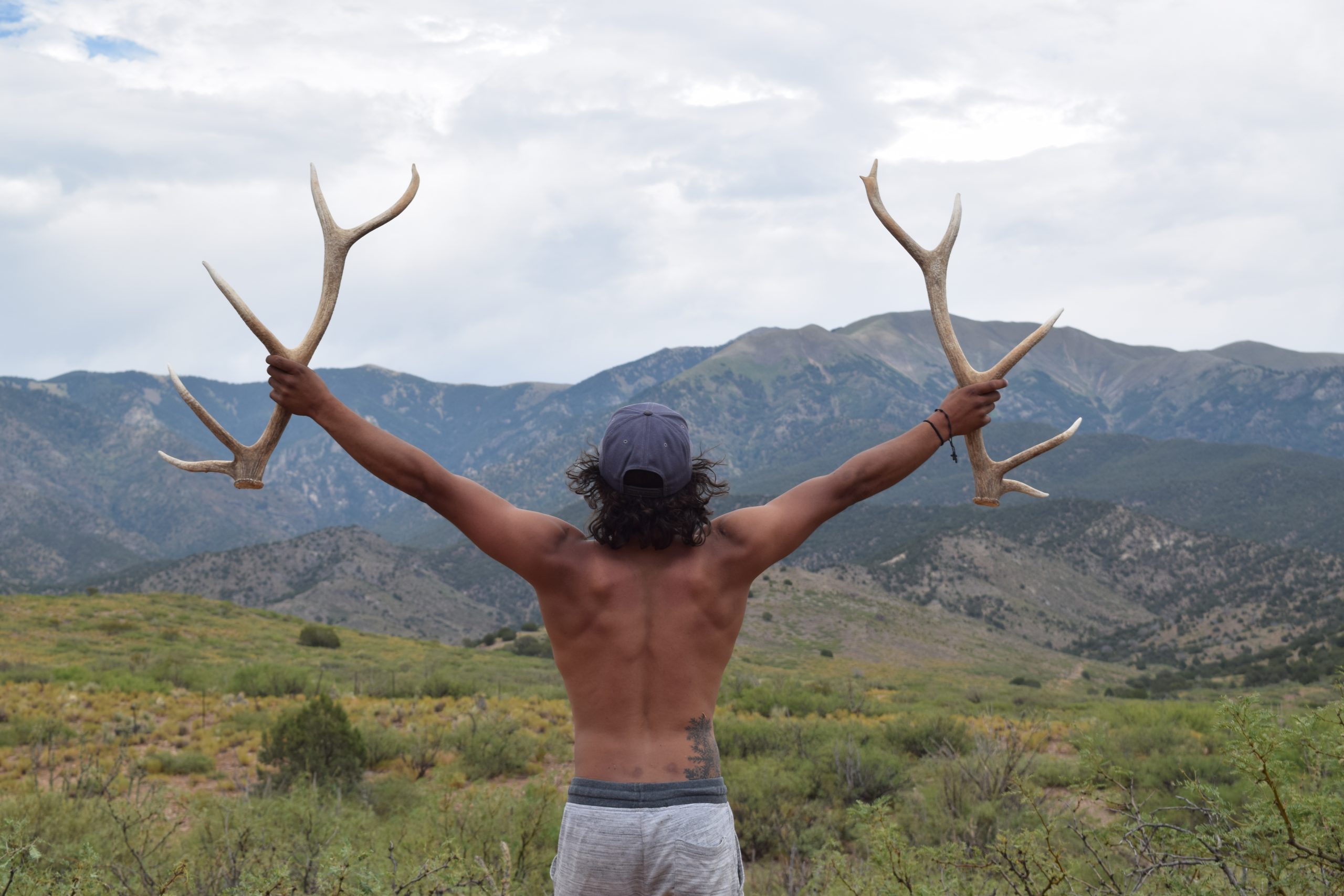
It could have been an old truck’s exhaust backfiring, we didn’t know. What it really sounded like was a gunshot, but we wouldn’t admit that. We only saw one other vehicle in the area on the way in. It was already dark when we decided to spend the night at the rusty, abandoned windmill and cattle tank. We were on a piece of land we shouldn’t have been on and we knew it. There was something about this patch of earth that spooked us; perhaps it was its remoteness or its lawlessness. Maybe it was the ancient peoples who used to live here and their stories of angry spirits. Maybe it was the gunshot. Either way, we pretended to forget about it.
We camped where the three rivers met—where barren desert kissed lush, emerald mountains. We got in late the night before a big shed hunt. Alex was an avid shed hunter, having hiked all over these mountains and this desert in search of antlers. On a good day, he’d come back with a heavy, cumbersome load strapped to his pack. A good shed hunt could yield dozens of antlers or more. In this area, brown elk and mule deer antlers or “brownies,” as Alex called them, suggested that the animal had only recently dropped them, as they do every spring.
Brownies were the real prize, especially from elk, as they looked the prettiest and sold for the most. But at this time of year in mid-July, the sun would have scorched almost every antler it’d come in contact with for a prolonged period of time, leaving most of them chalky and bone-dry. At the windmill we set up sleeping arrangements, drank some aged tequila, and fended off swarms of ardent moths—there was no campfire.
The next morning we woke up before dawn and this side of the mountains were still shaded from the rising sun behind them. A hasty breakfast and we started walking through sandy washes and desert shrubbery towards the mountains to our west. The flat earth gradually grew into rolling hills. The sun was soon on us and we could already feel its intensity early in the morning.
As the hills swelled larger the closer we got to the mountains, small junipers started springing up one by one until they got bigger and bigger and we were suddenly immersed in a forest. The shade was comforting and we clung to it, stopping and glassing with Alex’s binoculars from cool vantage points for anything that stuck out amongst the greenish-brown vegetation. We trudged forward, going higher and higher in elevation in the direction of the mountains. At the top of one sunny plateau, with desert below in one direction and mountains above in the other, I spotted the first elk shed of the day.
It was sitting in the shade between the trunks of two juniper trees. The moment my eyes scanned over an out-of-place tinge of white amongst the junipers was the moment my body came to a halt. I knew what it was.
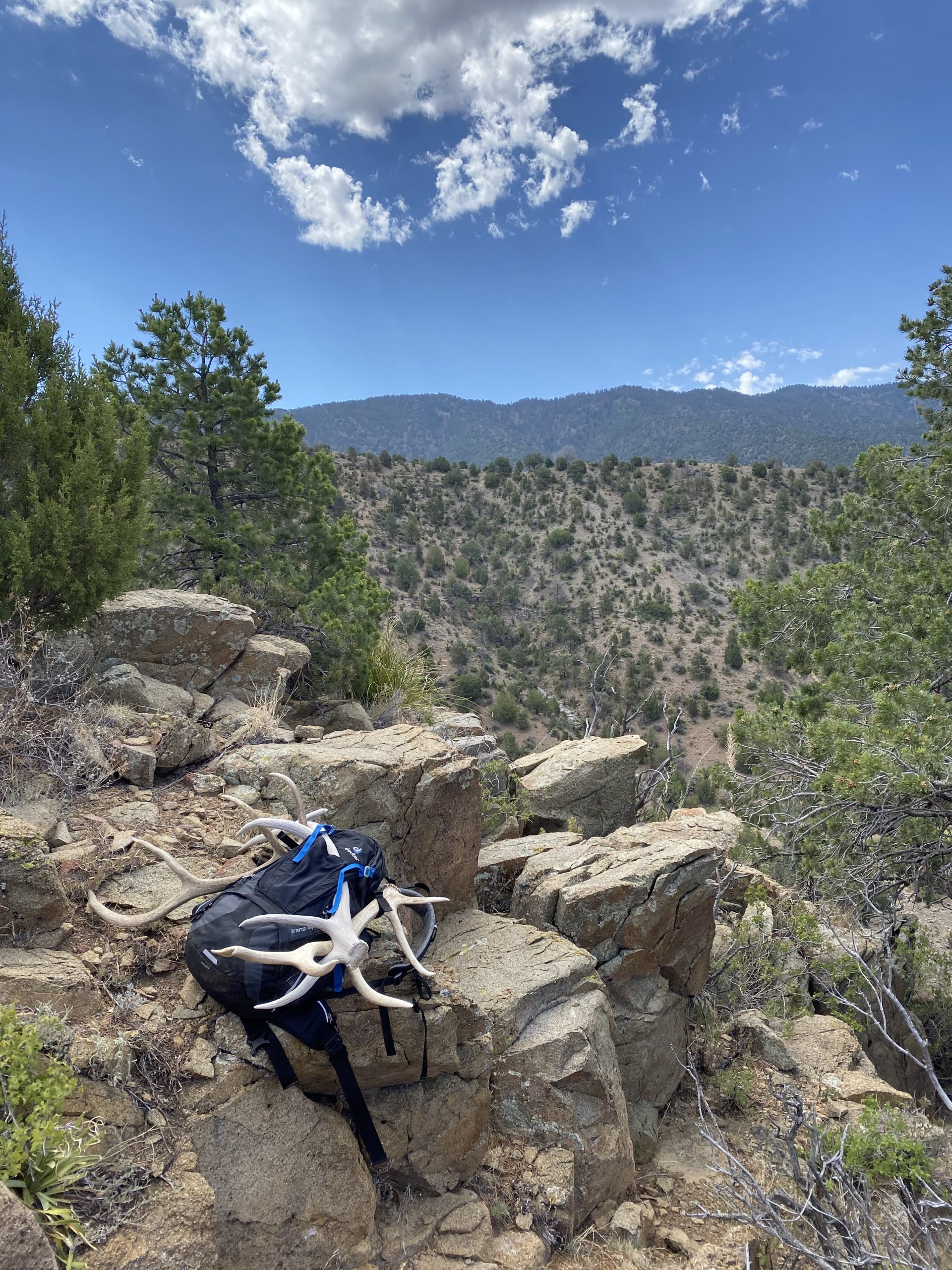
I shouted back towards Alex, who was zigzagging the hillside below the crest of the plateau. He hurried over and we were both elated—it was the first elk shed I had ever found. It was a small antler with about six tines; it was old and chalky with a coarse, dusty feel to it—not a brownie but a shed nonetheless. We shared smiles and high fives—the morning of grueling hiking had suddenly all become worth it. But we soon returned to mindfully sweeping the countryside for more of them, with no time to waste. Not more than five minutes had passed when I found another one.
This antler was precariously positioned in the upper portion of a stubby juniper tree, which looked more like a bush. The shed was at shoulder level as I eagerly went over and plucked it from the branches. It was also old and chalky like the last one but bigger.
A bull elk had been fiddling with the tree at some point, using the tree to rid itself of this annoying piece of bone that had outlived its purpose. The bull dislodged it in the tree branches and went elsewhere while the antler remained, frozen in time. Alex said he hadn’t found a shed stuck in a tree like that before and so we laughed. It was not long after that he had found a shed as well—a big, white eight-pointer that he immediately and quietly strapped to his pack. He carried on silently.
By lunchtime, our packs were already strapped tight with sheds—ten or so between the two of us. We found a nice, shaded spot beneath some juniper trees with a view of the desert floor below. We enjoyed sandwiches and a timeout from the heat. The sun was high in the sky and the temperature was likely in the triple digits already. We decided to start the long trek back to the car because we were over the heat and were already satisfied with our finds from the morning—me especially because I had found more sheds than Alex. But that moment of silent gloating was short-lived.
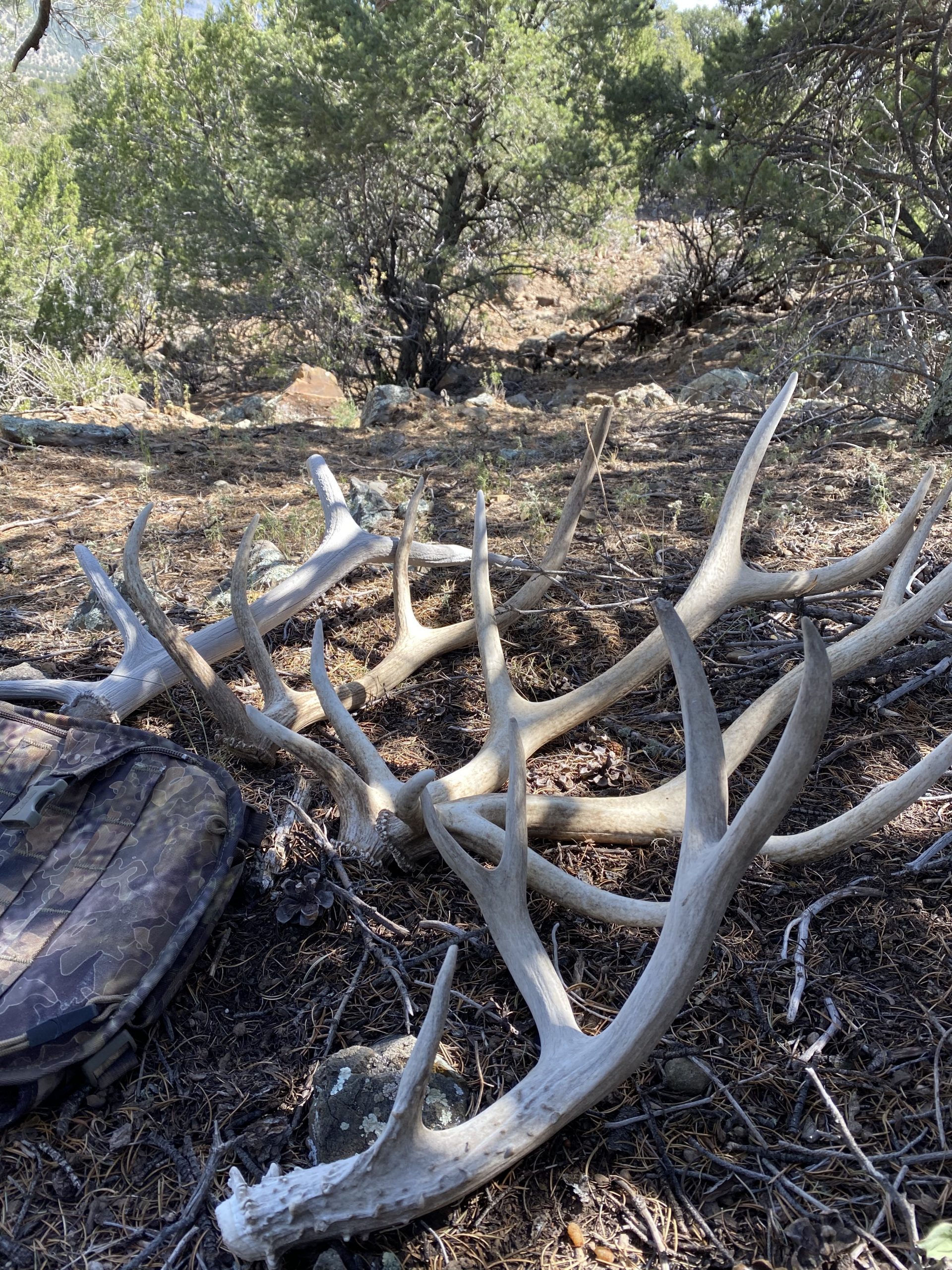
We aimed towards a dry creekbed at the base of the plateau but quickly realized that we were up higher than we thought; the descent proved to be a steep, rocky mountainous mess that took much longer than expected. The rocks were small and loose and you had to be careful not to lose your balance and tumble down the steep decline. To make matters worse, Alex told me that this type of country is the type that black bears and mountain lions love and probably reside in, and that we should be on our toes.
We were miles away from the nearest road with no cell signal and backpacks full of sheds. At one point on the way down to the creekbed, Alex and I became separated. I yelled for him but heard nothing. Powerful, piercing sun rays beamed on me in the desert heat but I still couldn’t help but get the chills.
Nearing the creekbed, I heard his booming voice coming from up and to the right of where I had just come. I was washed with a wave of relief. I went over to him, where he was sitting below a large, dead juniper tree next to a bull elk skull that still had its antlers attached.
“Come look at this,” he said. The bull’s skull had a copper bullet lodged in its forehead. Someone had shot this elk but left its skull and antlers behind. “Probably a poacher,” Alex said, who had likely shot the animal and harvested its meat but not its horns so they wouldn’t have been spotted leaving the area with something as noticeable as a fresh set of elk antlers.
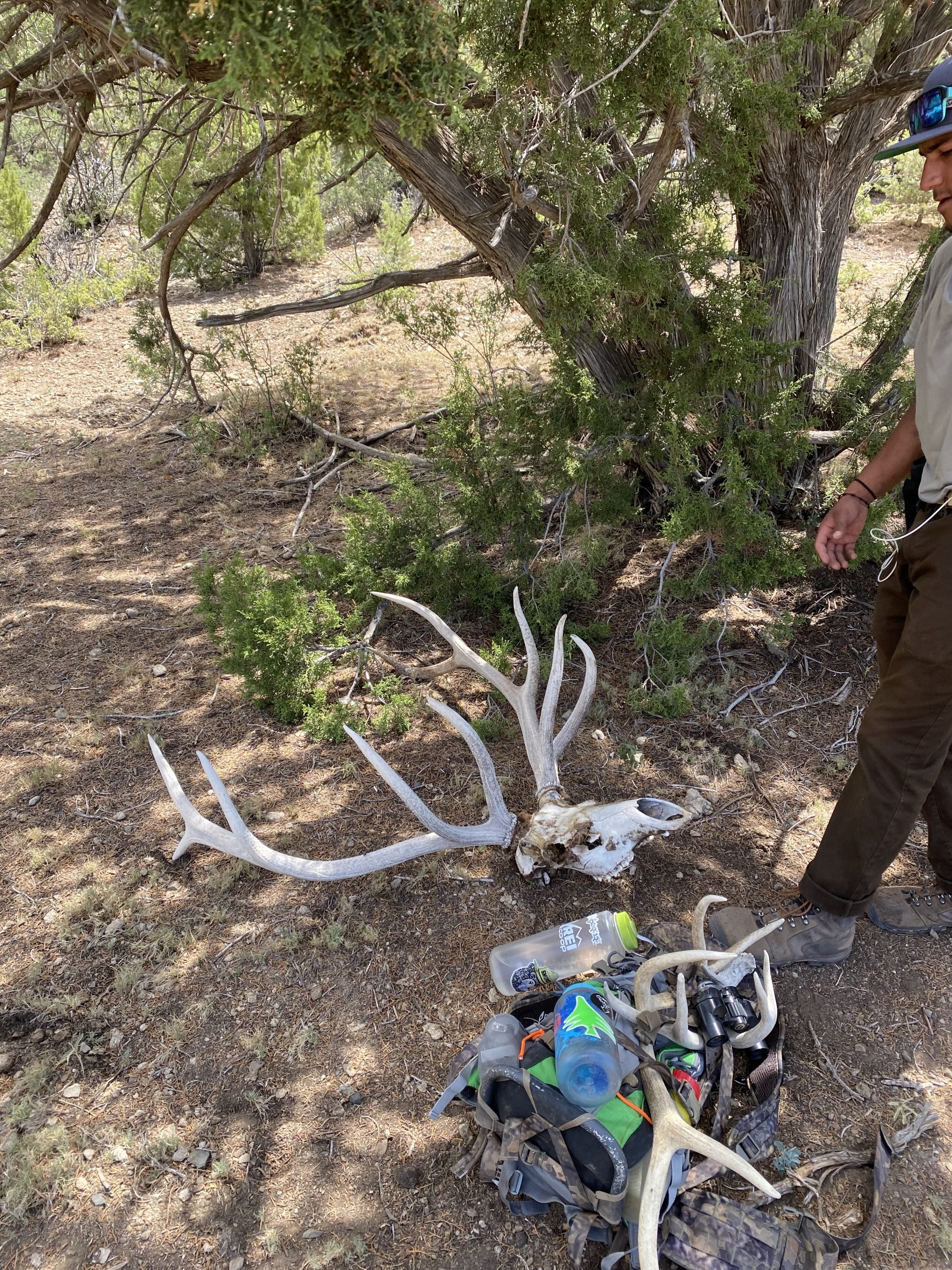
We carried on, following the dry creek as it snaked along the feet of towering plateaus, offering us much shade. It eventually dumped out into a flat basin where other creeks met it. Was this one of the three rivers that distinguish this area? I wondered.
It was here that Alex started finding shed after shed like he was in an orchard harvesting low-hanging fruits. He’d walk along, stop, bend over, pick one up, put it on his pack, keep walking, and repeat a similar process a hundred yards later. It hadn’t been long since I took delight in the notion that I had found more sheds than Alex, whose pack was now clearly heavier than mine.
The closer we got to the vehicle, the flatter the ground got and the more sheds we started finding. We crossed sandy washes and flat bushy areas and they were everywhere, with Alex and I picking them up off the ground left and right. We recovered sheds all the way up until the car and were pleasantly surprised that we hadn’t found them in the morning when we first set off.
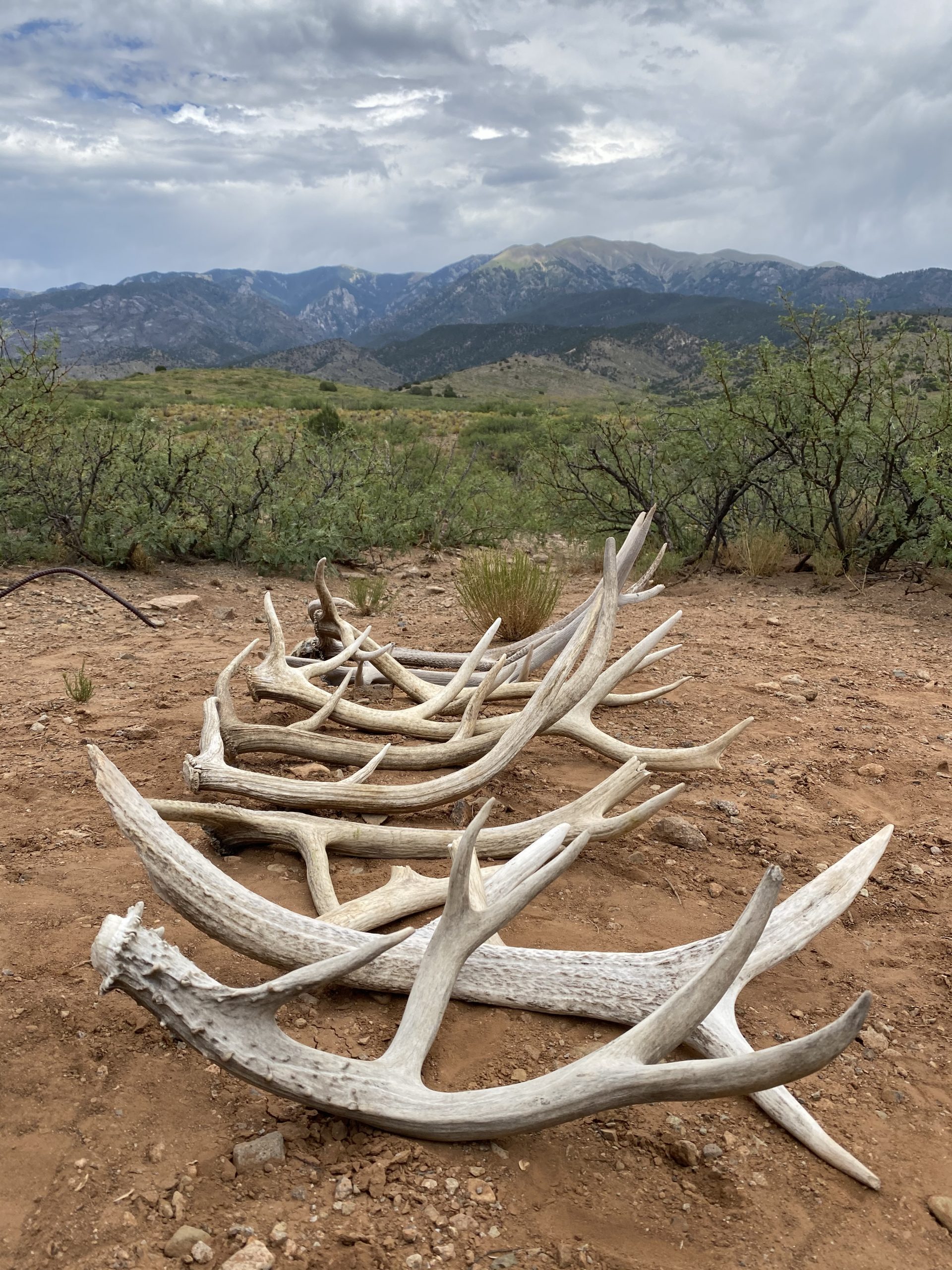
It was early afternoon when we got back to my car; we were drenched in sweat, out of water, and thoroughly exhausted. But we were stoked with the day. Alex had found about eleven sheds and I had found nine, including a set, which is a pair of antlers from the same elk. Finding sets isn’t common as elk don’t usually shed their antlers at the same time, Alex told me, so we were both excited when I had found one. We snapped a couple of photos of our finds and enjoyed the desert scenery and far-off mountain views for a moment from the comfort of my car’s AC. “Not bad for a morning of hiking around in a pretty spot,” I told Alex. He agreed.
In this inhospitable land we had scoured that day, we saw signs of life and death everywhere. Sheds and animals bones were scattered like puzzle pieces across the desert floor while raptors, lizards, and insects carried on, business as usual. We didn’t know it at the time, but in this world—in their world—we belonged to them.
On the way out we passed by a petroglyph site. Ancient people had once lived in this seemingly uninhabitable land long ago and had left behind traces of their existence—stone inscriptions of their unique lives and culture for future onlookers like us to admire and ponder about later. Alex and I chatted about these things as we sailed back along the empty, dusty highway with weary grins on our faces and a trunk full of sheds.
